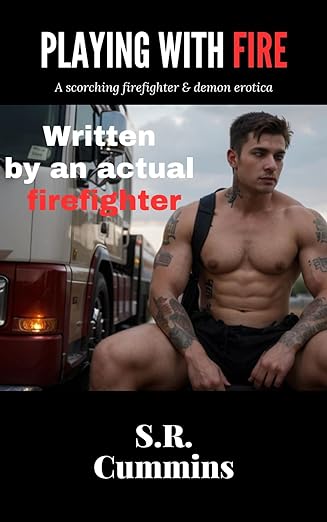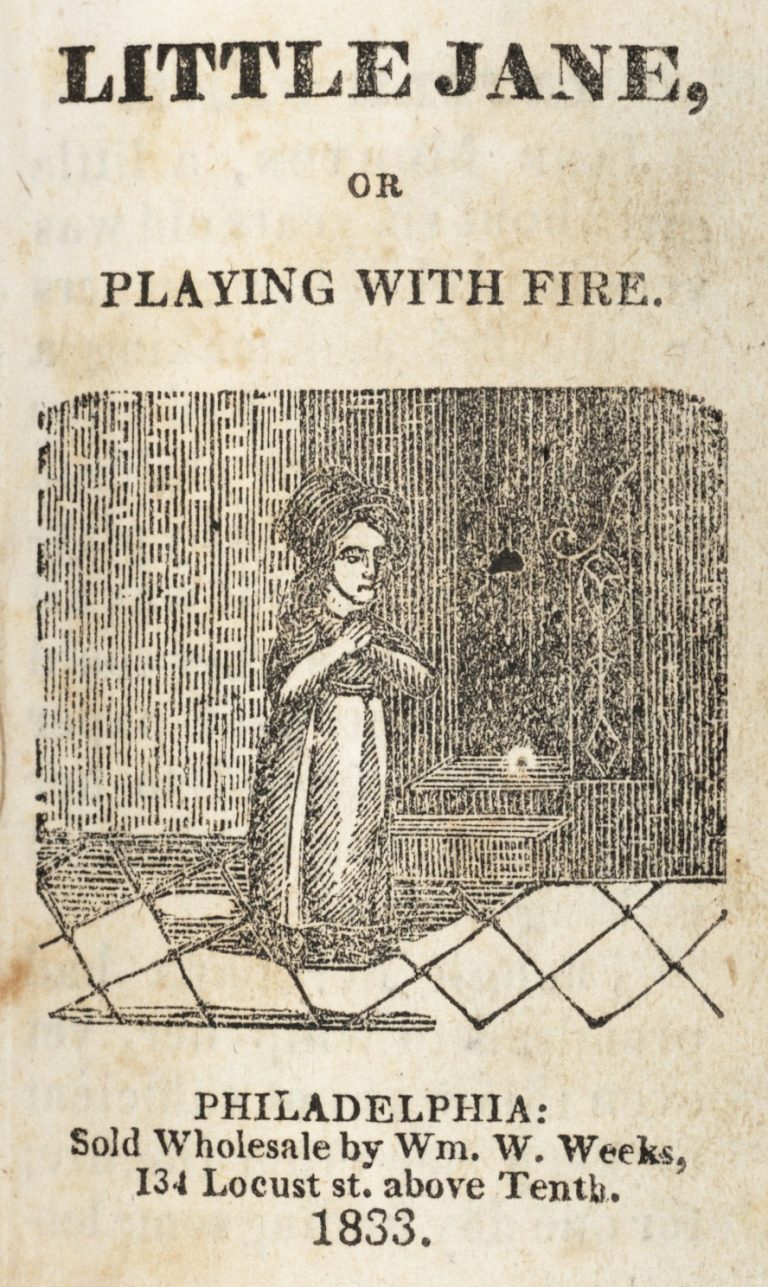I’ve decided to rename this occasional writing vehicle (blog? newsletter? both?) Playing with Fire—Thoughts about fire, writing, and life. The idea came out of a recent brainstorming session exploring possible titles for my book, in which the suggestion came up of renaming it “Playing with Fire.” I thought: “I bet that’s been used before.” Has it ever!
Titles cannot be copyrighted, and if Playing with Fire has not won the prize for most-used title of all time, it must be in the running. A search for the term in Amazon turns up 143 different books titled Playing with Fire— just on the first ten pages of search results. I gave up counting after ten pages; there were still sixty-five pages to go. The phrase also serves as title for a jazz composition, nine music albums, over twenty songs, a music festival, and at least three music bands; nine films including early silents, family comedies, an X-rated movie, and a documentary; two television series and a half dozen episodes of other series; at least five podcasts and many podcast episodes; and a game played with dice and cards.
In my chapter about fire symbols and metaphors I claim that “fire is the most ubiquitous and multifaceted symbol in human culture.” We use fire metaphors to describe emotions; processes of transformation, transmission and contagion; ambiguity and power; and more. Fire “offers our earliest experience of contradiction and ambiguity,” says linguist Jonathan Charteris-Black. “Fire is inherently ambiguous. While it appears to be alive, it can also cause death: it is simultaneously safe and dangerous.”
Books titled Playing with Fire apply the metaphor to a wide variety of subjects. Most include subtitles that give some hint of how a particular book uses the phrase, for example Playing with Fire: A Modern Investigation into Demons, Exorcism, and Ghosts. Other non-fiction books burn through topics of
· history (Playing with Fire: A Story of the Soudan War )
· politics (Playing with Fire: The 1968 Election and the Transformation of American Politics)
· finance (Playing with FIRE: Financial Independence Retire Early)
· gender (Playing With Fire: Feminist Thought And Activism Through Seven Lives In India)
· social justice (Playing with Fire: the Strange Case of Marine Shale Processors)
· cooking (Playing with Fires: Firehouse Recipes and Their Chefs)
· policy (Playing With Fire: Embracing Risk and Danger in Schools)
· psychology (Playing With Fire: Creative Conflict Resolution for Young Adults)
· memoir (Playing with Fire: One Woman’s Remarkable Odyssey)
· art history (Playing with Fire: European Terracotta Models, 1740 to 1840) and
· religion (Playing With Fire: How the Bible Ignites Change in Your Soul).
In a book of advice to ministers about how to write sermons (Playing with Fire: Preaching Work as Kindling Art) “we discover that playing with fire is a sacred act indeed.”
Literature shows up in
· a play by August Strindberg
· mythology (Playing With Fire: An Exploration of Loki Laufeyjarson), and
· poetry (Playing With Fire: A Year of Love Letters and Poems, Set Ablaze, and Other Vulgar Lore Dedicated To You).
Fires play out in many types of genre fiction as well, including:
· suspense (Playing with Fire: An Inspector Banks Novel of Suspense)
· crime thriller (Playing with Fire: an absolutely addictive crime thriller with a huge twist)
· fantasy (Playing With Fire: Dragons Of The Darkblood Secret Society—a Paranormal Shapeshifter Romance) and
· mysteries (Playing with Fire: Arizona Guy – A Ted White Mystery).
Nancy Drew finds herself investigating arson at a luxury hotel in Playing with Fire (Nancy Drew Files Book 26). She “might find herself in some hot water along the way!” Other books for younger readers include a story about a “juvenile delinquent and budding pyromaniac” (Playing with Fire – A School for Spies Novel), a story about a girl with paranormal powers (Saranormal 9: Playing with Fire), and a graphic novel titled LEGO Legends of Chima #6: Playing With Fire!
By far the largest number of titles fall into one or another genre of romance, including entire series (“In the thrilling Playing with Fire series, dive into the tempestuous world of star-crossed lovers from feuding families.”) “Security romances” feature hot alpha-male bodyguards sworn to protect vulnerable women at all costs (Playing With Fire: A Reed Security Nightmare). Hunky firefighters inspire many romantic fantasies (Playing with Fire: A Friends-to-Lovers Firefighter Romance). “She’s secretly burned for him for years.” Some place their firemen in the context of other fantasy genres: Playing with Fire: a scorching firefighter & demon erotica—written by an actual firefighter. Though usually these romances cast the first responders as heroic dreamboats, one cautionary tale centers on a firefighting con man (Playing with Fire: The True Story of Fireman Scam).
In what seems to be an ever-Balkanizing genre, many romances spell out their sub-genre, sub-sub-genre and even sub-sub-sub-genre directly in their titles:
· Playing with Fire: A Dark High School Bully Romance
· Playing With Fire—The Fire Trials (A Reverse Harem, University Romance)
· Playing with Fire: A Single Dad and Nanny Romance
· Playing With Fire: An Enemies to Lover Alpha Male Protector Romance
· Daddy and Me Playing with Fire: A Taboo Forbidden Stepdaddies of Small Town Romance.
Strangest and most specialized of all perhaps is a work in the MPreg sub-genre:
· Playing With Fire: A Bridgewater Bay MPREG Novel). MPreg books detail romantic fantasies about men who somehow can get pregnant.
Only one current book (at least, in the first ten pages of Amazon search results) addresses the real-world dangers of literally playing with fire. In Playing with Fire: How Bart learns his lesson about fire safety the hard way, a picture book for 5–6-year-olds, a cute animal that may or may not be a dog ignores the fire safety advice of his furry friends and carelessly sets a campfire that nearly burns down their forest home. He learns his lesson just in time.
A similar lesson gets imparted in what must be the oldest book using the title, though its heroine does not fare as well as cute furry Bart. In Little Jane, or Playing with Fire (1833), a willful young girl purloins letters from her mother’s desk, rolls them into a makeshift torch, and lights it in the fireplace. “Flourishing the blaze,” the “foolish child” runs about the room having “fine fun” until she accidentally sets the bedclothes on fire. Trying to put the fire out, she ignites her own frock. Soon the entire house goes up in flames. Her father dies when a burning beam falls on him, her mother dies of grief, and in the end little Jane must “go begging about the country, wishing she had never played with fire.”
Perhaps I will likewise learn to rue the day I decided to use this exceptionally shopworn phrase as title for my blog-cum-newsletter. I don’t want to risk my book getting lost among hundreds of identical titles, but the competition in blogs seems much less fierce than for books. Playing with Fire blogs include several tied to the FIRE financial independence book, at least two about cooking, one about online dating on the Tinder platform, and one memoir using a double metaphor to recount tales of “Living Ablaze when Life Goes Up in Flames.”
I’m told that “it should be clear to new visitors what your blog is about and what they’re going to get from it… If your blog title is metaphorical, clever, or not clear… add a tagline that tells and sells the angle.” So: thoughts about fire, writing, and life. Have I sold you on my angle? Should the newsletter compile blog posts or offer something different that includes links to the blog? Suggestions welcome.
Share via:






